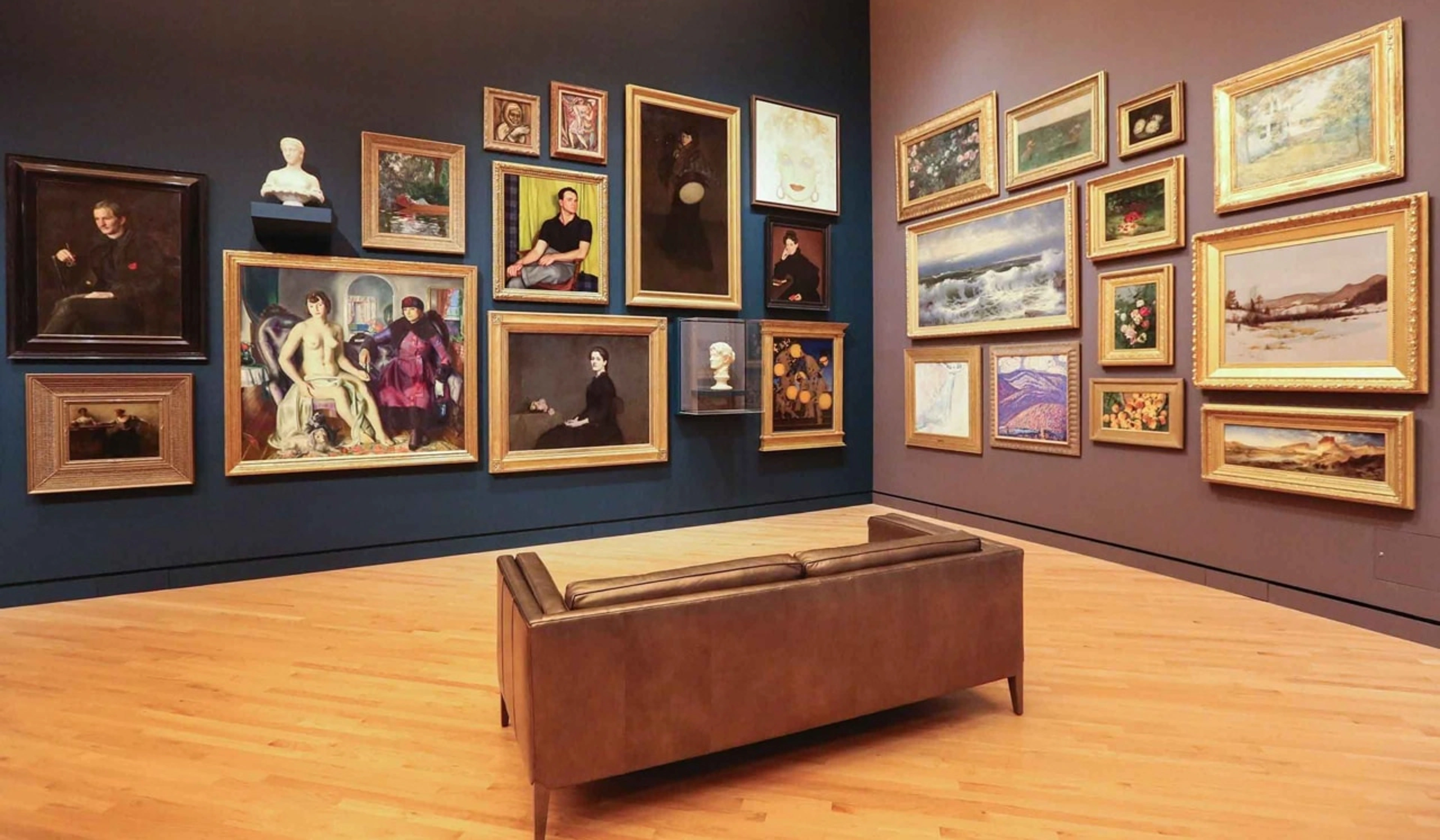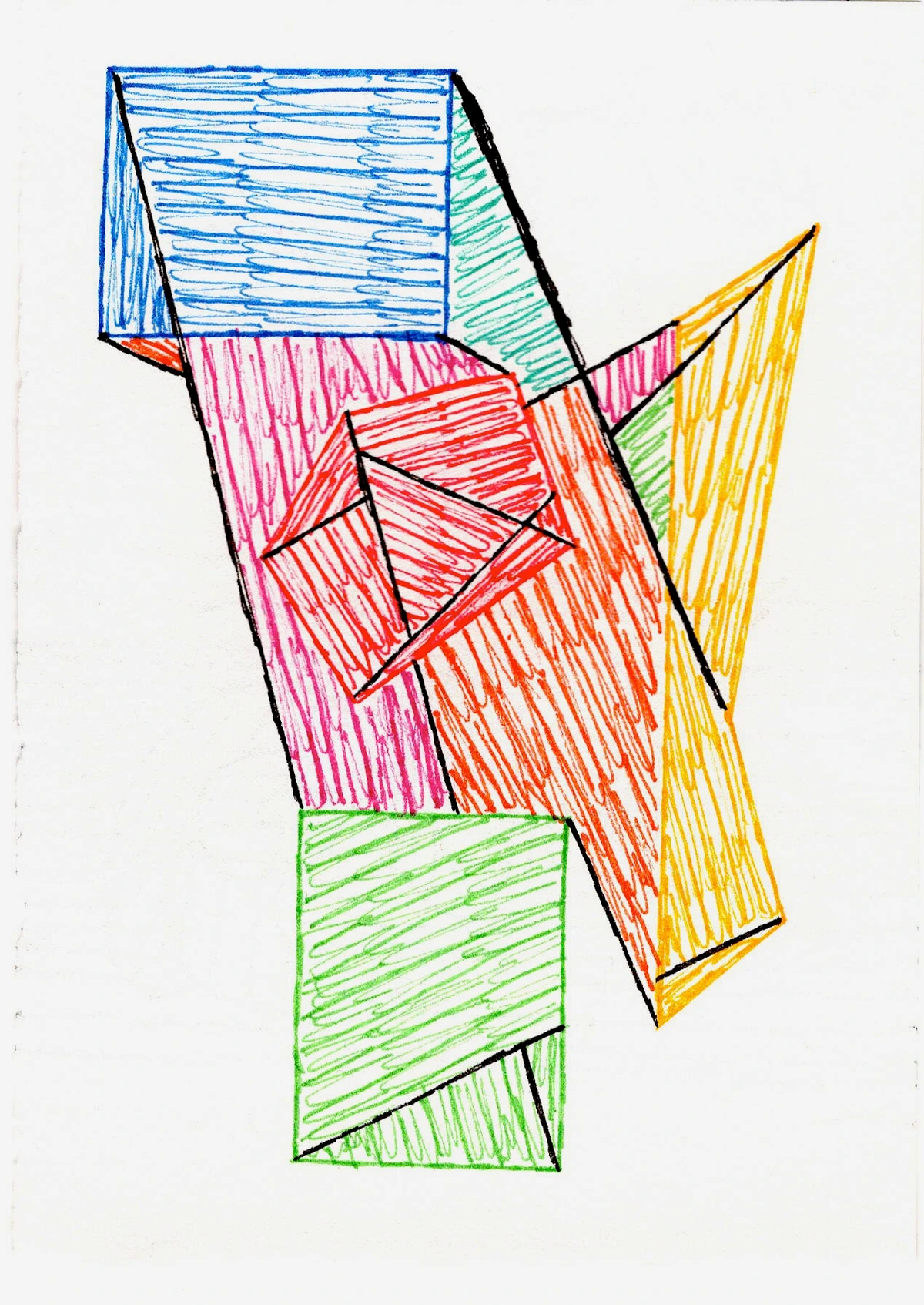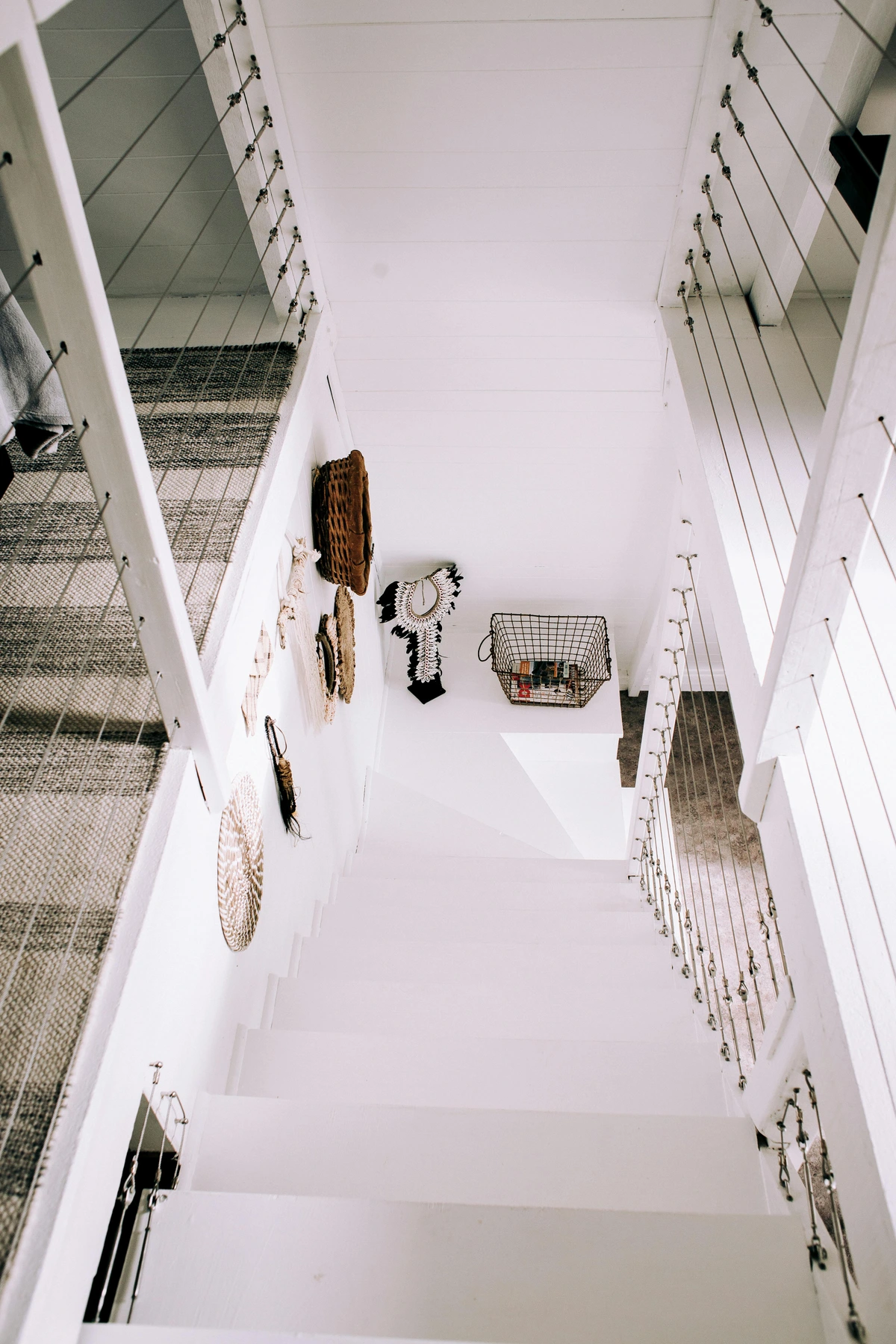
Transforming Hallways & Staircases with Art: A Personal Guide
Ever wonder how to make your home's transitional spaces shine? Discover my personal journey and practical tips for decorating hallways and staircases with art, turning them into vibrant, engaging pathways.
Transforming Hallways & Staircases with Art: A Personal Guide to Overlooked Spaces
You know, for the longest time, I completely neglected my hallways and staircases. They were just... passages. Functional, yes, but utterly devoid of personality. Like that one friend who's always there but never really contributes to the conversation, you know? It's a common oversight, I think. We pour our hearts into living rooms, bedrooms, kitchens—the 'destination' rooms. But what about the journey? What about those in-between spaces that connect everything, silently guiding us from one experience to the next? I used to just rush through them, seeing them as mere conduits, but oh, what a missed opportunity that was! These spaces aren't just about getting from point A to point B; they're canvases waiting to tell a story, to offer a moment of reflection, or simply to add a burst of unexpected joy to your day.
That's where the magic, I believe, truly begins. Turning a mundane pathway into an intentional visual experience, a little moment of joy as you walk through your home. It’s about recognizing the hidden potential in these often-forgotten areas. Imagine, if you will, a guest arriving at your door. The hallway isn't just a path to the living room; it's the opening act, the preview of the wonderful home they're about to experience. Why wouldn't we want that opening act to be as captivating as possible?
The Unsung Heroes: Hallways, Landings, and Staircases
These are the arteries of your home, constantly in motion. They're not static rooms; they're dynamic pathways. Think about it: a hallway is often the first thing a guest sees, setting the tone. A staircase is an architectural feature, a focal point that literally elevates you. And yet, we so often leave them bare, or worse, cluttered. I once had a friend whose hallway was essentially a catch-all for coats, shoes, and unopened mail—a 'doom tunnel' as I affectionately called it. Art, even a single, well-chosen piece, can completely change that narrative, transforming a 'doom tunnel' into a 'discovery path.' Whether you have a grand foyer, a tight urban corridor, or a sprawling landing, each space presents its own unique opportunity for artistic intervention. And it's not just about aesthetics; there's a subtle psychological shift that happens when these spaces are given attention. They feel cared for, intentional, and they contribute to the overall sense of calm and beauty within your sanctuary. It's like finding a little gem in an unexpected place—a pleasant surprise that brightens your day.
Breathing Life into Your Hallway
Hallways can be tricky, I'll admit. They're often narrow, sometimes long, and light can be a challenge. But these constraints are actually fantastic opportunities for creativity. I've found that abstract art, with its ability to evoke emotion and energy without demanding literal interpretation, works wonders here. It keeps the space feeling open while adding depth. Think about it: a vibrant burst of color or a flowing, organic form can activate a narrow space without making it feel claustrophobic. If you're curious about the diverse world of abstract expression, I've even explored the ultimate guide to abstract art movements that might inspire your choices.
Consider a long hallway. Instead of one huge piece that might overwhelm, I lean towards a series of smaller pieces, maybe even a modest gallery wall. This creates a rhythm, a visual story that unfolds as you walk. It transforms a sprint into a gentle stroll, giving you reasons to pause and reflect. Don't worry about being too perfect; a little asymmetry adds character, a bit like life itself. For a gallery wall in a hallway, I often suggest varying the frame styles and sizes, creating a curated, eclectic feel. It's like a personal museum, inviting you to linger.

When thinking about narrow hallways, it's about maximizing impact without taking up physical space. Wall-mounted art is obviously the way to go. I often suggest pieces with lighter backgrounds or vibrant, upward-sweeping compositions to make the space feel taller and airier. Imagine a painting with vertical stripes or a rising abstract form; it's almost as if the art is helping the walls reach for the sky, creating an illusion of space. If you're struggling with smaller spaces, I’ve shared some thoughts on maximizing art impact in small spaces that might spark some ideas. And don't feel limited to just paintings! Consider slender wall sculptures, tapestries, or even well-placed mirrors (which, as a bonus, can also help expand the perception of space).
Elevating Your Ascent: Art on Staircases
Staircases are, in my humble opinion, one of the most exciting places to display art. Why? Because you experience the art from multiple vantage points: as you approach, as you ascend, and as you descend. It's a truly dynamic viewing experience. This means the art needs to hold up from various angles and distances. I remember once seeing a piece on a staircase that looked magnificent from the bottom but became awkward and distorted as you climbed. Lesson learned: test it from all perspectives!
For staircases, I often consider the flow. A series of pieces marching up alongside the stairs can create an incredible visual journey. Or, a single, powerful statement piece on a landing can act as a breathtaking punctuation mark. The key is to complement the architectural lines of the staircase itself. If you have a sweeping, curved staircase, perhaps art with organic forms or fluid lines would be harmonious. For a more modern, angular staircase, bold geometric abstracts might be the perfect fit. Also, consider the material of your staircase – dark wood might call for lighter, more vibrant pieces to create contrast, while a minimalist metal and glass staircase could be beautifully enhanced by contemporary works that play with light and reflection. What's truly magical about staircase art is how it reveals itself differently with every step you take. A detail you missed on the way up might catch your eye on the descent, creating a fresh, engaging experience each time.

It's also worth a quick thought about protecting your art in these high-traffic zones, especially if you have little ones with curious hands or playful pets. Secure fastenings are a must, and sometimes, a protective frame with museum-quality glass can be a wise investment for peace of mind.
The Art of the Gallery Wall on a Staircase
Ah, the gallery wall! A personal favorite of mine, though it requires a bit more planning. It's like curating a mini-exhibition within your own home. On a staircase, a gallery wall truly comes alive. It can tell a story, combine different styles and sizes, and really add a sense of richness. My biggest tip? Start with a central anchor piece and build outwards. And don't be afraid to mix things up! Different frame styles, mediums, even a small mirror here and there—it all adds to the charm. Think of it as a visual autobiography – perhaps a collection of travel photos interspersed with local art, or a generational display of family portraits and cherished mementos. The narrative possibilities are endless, and they make the climb all the more engaging. You could choose a theme based on color, a specific artist, a historical period, or even simply "things that make me smile." The beauty is in the personal curation.

This image illustrates the concept of a gallery wall, a style that can be adapted beautifully to a staircase, creating a rich visual narrative as you ascend or descend.
My Personal Philosophy: Art as an Experience
When I'm choosing art, whether for my own space or helping a client, I always come back to one thing: how does it make you feel? Especially in transitional spaces, art isn't just decoration; it's an experience. It’s a quiet moment, a flash of color, a thought-provoking form that you encounter daily. For me, abstract art often resonates most deeply because it allows for personal interpretation. It doesn't tell you what to see; it invites you to feel. I find there's a unique freedom in that; the art becomes a mirror, reflecting your own emotions and thoughts back at you, making each encounter a truly intimate one. It's like a secret language spoken only between you and the canvas. If you're looking to bring more of this feeling into your home, you might find something that speaks to you in my collection. And if the world of abstract art truly captivates you, I highly recommend diving into the evolution of abstract art movements to understand its rich history and diverse forms.
It’s about more than just filling a wall. It's about enhancing the flow of energy, adding unexpected beauty, and injecting personality into every corner of your home. It’s about creating moments – those tiny, unexpected pauses in your day where you connect with something beautiful, something that reminds you of who you are and what you love. These fleeting interactions can have a surprisingly powerful impact on your overall well-being. If you want to explore the history of art in interior design, I've got a rather fascinating piece on the evolution of art in interior design that might tickle your fancy.
Beyond Paintings: Sculptures, Textiles, and More
Sometimes, our minds get stuck on the idea of a painting in a frame when we think of 'art.' But oh, my dears, the world of artistic expression is so much wider! Especially in hallways and staircases, where dimensionality and texture can truly transform a space, considering alternatives to flat canvases can open up a whole new realm of design possibilities.
The Allure of Three Dimensions: Sculptures & Wall Art
Wall-mounted sculptures, for example, can add incredible depth and shadow play. Imagine a sleek metal piece catching the light as you ascend your staircase, or a subtle ceramic installation creating an unexpected tactile experience in a hallway. They offer a different kind of visual interest, often engaging with the space in a more architectural way. Just ensure they don't protrude so much as to become a physical hazard – safety first, always!
Softening Edges: Textiles and Tapestries
Textiles bring warmth, sound absorption, and a wonderful sense of texture to these often hard-surfaced transitional areas. A beautiful hand-woven tapestry can become a striking focal point in a large hallway, or a series of smaller fabric art pieces can add a cozy, bohemian touch. They're also wonderfully forgiving in terms of glare and reflection, offering a softer aesthetic.
Reflecting Beauty: Mirrors as Artistic Statements
And then there are mirrors! While primarily functional, a well-chosen, ornate, or unusually framed mirror can absolutely function as a piece of art. Beyond their obvious utility, they bounce light, create illusions of space, and can add a touch of glamour or historical charm. Grouping several mirrors of different sizes and shapes can even create a captivating 'mirror gallery wall.'
Practicalities & Ponderings
Beyond aesthetics, there are a few practical elements to consider when hanging art in hallways and staircases. You don't want your beautiful new pieces to become trip hazards or perpetually dusty, do you?
- Lighting: Natural light is lovely, but often lacking in these spaces. Consider accent lighting for key pieces—small picture lights or recessed spotlights can dramatically enhance the art and make the space feel more inviting. Just remember to avoid glare! And let's not forget the wonders of smart lighting systems, which can allow you to adjust brightness and color temperature with a tap, truly transforming the mood of your hallway or staircase at different times of day. I'm a big fan of LED picture lights for their energy efficiency and adjustable warmth, or if you're feeling fancy, integrated track lighting can offer incredible flexibility to highlight different pieces as your collection evolves.
- Hanging Height: This is where things get a little subjective, especially on a staircase. For hallways, eye-level is usually recommended (center of the art about 57-60 inches from the floor). On a staircase, however, you'll want to follow the slope of the stairs, keeping the center of each piece roughly eye-level for someone on that step. It’s a dance, really, between the art and the architecture. When in doubt, mock it up with paper templates first! Trust me, a little preparation goes a long way. Cut out paper or newspaper to the size of your art, tape it to the wall, and live with it for a day or two. Walk past it, climb the stairs – see how it feels from all angles before you commit to those nail holes. It's like trying on clothes before you buy them, but for your walls!
- Framing & Protection: Hallways and staircases often see more traffic and potential for bumps. Opt for sturdy frames and, for valuable or sentimental pieces, consider UV-protective and anti-glare glass. It’s an investment that pays off in longevity and clarity. You might even look into museum-grade or conservation glass, which offers superior protection against fading and reflections, ensuring your cherished artworks remain vibrant for years to come.
- Scale: My rule of thumb? Don't be afraid to go bold, but always consider the overall scale. A small, delicate piece might get lost in a grand entryway, just as an enormous canvas could overwhelm a narrow passage. Balance is key. I once saw a postage-stamp-sized painting hung alone on a vast wall in a cavernous hallway – it was utterly swallowed, a tiny whisper in a roar. Conversely, a colossal, commanding piece in a cramped corridor can feel like it's lunging at you, making the space feel even smaller. The goal is harmony, not competition. I've often thought about how art impacts other rooms too, like choosing art for your living room or even the unique challenge of a powder room.
FAQs: Quick Answers for Your Artful Journey
What kind of art is best for small or narrow hallways?
I’d recommend pieces that don't project too much from the wall. Abstract art with lighter backgrounds or vertical compositions can make the space feel larger. Also, consider a series of smaller, uniformly framed pieces rather than one large, dominant one. It creates flow without overwhelming.
How high should I hang art on a staircase?
My personal rule is to follow the rise of the stairs. The general idea is to have the center of each piece roughly at eye-level for someone standing on the step nearest to it. Or, if it's a series, aim for consistent spacing between the bottoms of the frames and the stair treads. It's less about a fixed measurement and more about visual harmony with the stairs themselves.
Can I mix different styles of art in a hallway gallery wall?
Absolutely, and I encourage it! Mixing styles, frames, and even mediums can create a wonderfully eclectic and personal statement. The trick is to find a common thread—perhaps a color palette, a recurring theme, or simply a unifying frame color—that ties everything together. It's all about telling your story.
Should art in these spaces match my existing decor?
Oh, this is a fun one! My short answer is: it doesn't have to match perfectly. In fact, sometimes a little contrast is exactly what these spaces need to add personality and visual interest. Think of your hallway or staircase as an opportunity to introduce a new color, a different style, or an unexpected texture that complements, rather than duplicates, what's in your main rooms. It's about creating flow and harmony, but also allowing for delightful surprises!
How can I incorporate family photos into my hallway or staircase art display?
Absolutely! Family photos, when curated thoughtfully, can be incredibly heartwarming and personal additions. The trick is to treat them with the same artistic intention as any other piece. Consider using consistent framing (e.g., all black, all white, or all natural wood) to create a cohesive look, even if the photos themselves are varied. You could also convert them to black and white for a timeless, artistic feel. Mixed with abstract pieces or small sculptures, they can form a truly unique and meaningful gallery.
Is it okay to hang very large pieces in a hallway?
It depends on the hallway! If it’s wide enough, a large, dramatic piece can be a stunning focal point. However, in narrow hallways, a very large piece can feel overwhelming or make the space feel smaller. Scale is crucial. Always measure twice, and maybe even mock it up with paper first to visualize.
Final Thoughts: Embrace the Journey
Ultimately, decorating your hallways and staircases with art isn't just about filling empty walls. It's about recognizing the emotional and aesthetic impact these transitional zones have on your home's overall feel. It's about turning mere passages into purposeful paths, imbued with beauty and personality. It’s a chance to tell a continuous story, to offer little moments of visual delight as you move through your personal sanctuary. So go ahead, cast a fresh eye on those overlooked spaces. I promise, they're waiting for your artistic touch to truly come alive. And when they do, you'll wonder how you ever lived without that daily dose of unexpected beauty in your journey through home.




